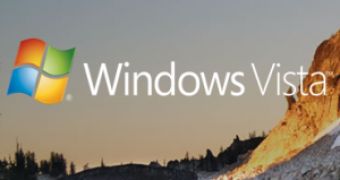Windows Vista and Windows Server 2008 are "aligned" operating systems despite the client and server side separation. In this context, the first service pack for Windows Vista, directly dependent of Windows Server 2008, will feature evolution in various aspects, as generated by the development of Microsoft's last 32-bit server operating system. The two platforms share the same core, but the similitudes stretch well beyond kernel-level. Discussing the alignment of Vista and Windows Server 2008, in terms of files common to the two platforms, Microsoft revealed that modifications introduced to such files in Windows Server 2008 would catalyze similar changes in Vista SP1, even if, ultimately they would deliver an impact only in server scenarios. An illustrative example is Vista SP1 file sharing.
"The file sharing subsystem on Windows Vista only allows 10 concurrent inbound connections. Windows Server 2008 must scale to support thousands of concurrent connections. During the testing and customer feedback phase of Windows Server 2008 development, the file sharing subsystems are tuned and refined to optimize the file sharing stack for performance, scalability and reliability. This level of tuning and refinement are not typically applicable on a 10-connection limit client, but are critical to a file server role. Changes like this are done primarily for the server scenarios, although these changes may also benefit Windows Vista SP1", Microsoft explained.
But, the file sharing subsystem on Vista SP1 is not the sole affected. The Redmond company will integrate the changes synonymous with the evolution of IIS 7 components into Vista SP1. Some editions of the latest Windows client do feature IIS, a move designed to facilitate the building and testing of web applications on the platform. But, Vista does not have IIS7 installed, unlike Windows Server 2008 where IIS has a server role. However, since IIS7 has grown from the release of Vista to that of Windows Server 2008 early next year, Microsoft will integrate the changes in SP1.
"Key subsystems such as the Windows Logon process and the core kernel need only support user-switching scenarios on Windows Vista. However, on Windows Server 2008, where a Terminal Server may have thousands of users logged in simultaneously, these subsystems must be tuned for maximum performance and reliability. Changes like this are done primarily for the server scenarios, although they may also benefit Windows Vista SP1", Microsoft added.

 14 DAY TRIAL //
14 DAY TRIAL //